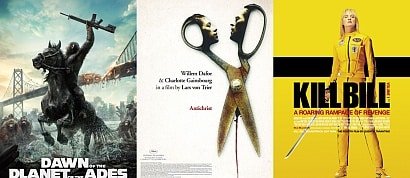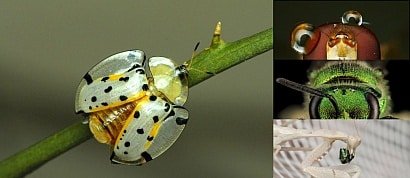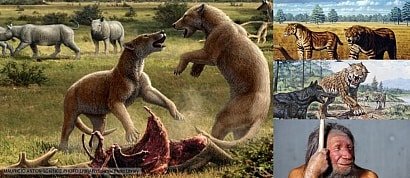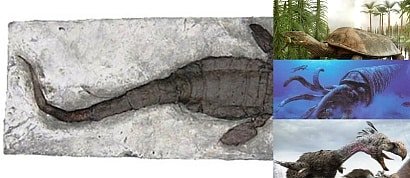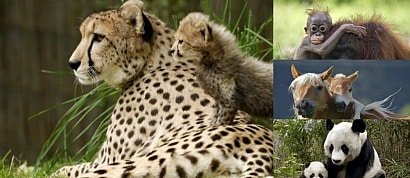Prehistoric Reptiles
 Add image to section
Add image to section
Postosuchus

A cousin of modern crocodiles, Postosuchus was an archosaur - the lineage of reptiles that include the crocodiles, dinosaurs and birds. Reaching lengths of five metres, Postosuchus was the top predator during the Late Triassic in what's now the southern USA. Since its front limbs were shorter than its hind limbs, there is debate as to whether it walked on two legs or four, but most palaeontologists favour the latter. Its stance, with the legs under the body, would have made it a faster and more efficient runner than a modern crocodile. Most Postosuchus fossils have been found in Texas' Post quarry, hence the name.
 Add image to section
Add image to section
Plesiosauria
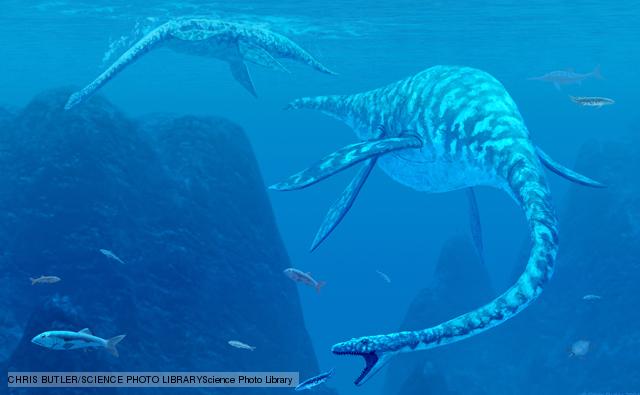
Plesiosauria includes the large, carnivorous, marine reptiles the Plesiosaurs and Pliosaurs. They used their flippers to propel themselves through the water, rather like a turtle except that they used both the front and rear flippers. Scientists were intrigued to find that using all four flippers didn't make them faster. In fact, the opposite was true, as turbulence from the front flippers interfered with the efficiency of the rear flippers. However, four flippers did make it easier to get going and brake. So while Plesiosaurs and Pliosaurs may not have been ultra-speedy, they would have been agile and quick to react to passing prey.
 Add image to section
Add image to section
Pliosaurs

Pliosaurs were a type of short-necked plesiosaur: marine reptiles built for speed compared to their long-necked cousins. One study estimated that certain Pliosaurs could swim at a little under 10 km/h. They were predators that hunted fish, cephalopod molluscs and other marine reptiles. Pliosaur skeletons have even been found with dinosaur remains in their stomachs, suggesting perhaps that they were not averse to scavenging carcasses that floated out to sea. Eventually the mosasaurs took over the Pliosaur niche in the prehistoric seas.
 Add image to section
Add image to section
Plesiosaurs

Plesiosaurs were long-necked marine reptiles, closely related to the Pliosaurs though probably slower in the water. Their swimming speed has been estimated at 8.2km/h, which is faster than an Olympic champion, but too slow to catch a mackerel, salmon or seal. Plesiosaurs are often depicted with their neck bent into sinuous folds. In truth it was not that flexible, and no Plesiosaur ever bent its neck into the tight curve today's swans can manage. Plesiosaurs became extinct at the same time as the dinosaurs.
 Add image to section
Add image to section
Dinosaurs

Dinosaurs were the dominant land animals for 160 million years, making them one of the most successful groups of animals ever. The name dinosaur translates as 'terrible or wondrous lizards' and they certainly evolved in a diverse range of sizes and shapes, from the gigantic plant-eating sauropods to the quick meat-eating tyrannosaurs. They also sported an impressive array of body modifications including horns, scales and crests. So far, the remains of over 1,000 different dinosaur species have been identified from fossils though technically, birds are feathered dinosaurs, meaning dinosaurs aren't really extinct at all.
 Add image to section
Add image to section
Lizard-hipped dinosaurs

The earliest known dinosaurs, lizard-hipped dinosaurs first appeared in the mid Triassic. As well as these first dinosaurs, the order includes all the carnivorous dinosaurs and one group of herbivores - the sauropods and their close relatives. The name 'lizard-hipped' comes from the shape of their pelvis, in which the pubis points towards the front of the animal. Birds are descended from this group of dinosaurs.
 Add image to section
Add image to section
Sauropodomorph dinosaurs

Sauropods are among the most famous and recognisable dinosaurs: long-necked, long-tailed giants that include Diplodocus and Brachiosaurus. Early sauropods were bipedal and quite small compared to their later descendants which became the heaviest and longest dinosaurs. It requires a four-legged stance to get to truly giant size, as you need to spread your weight. Like elephants today, the largest sauropods could only move at a walk as their leg bones couldn't withstand the impact of trotting or galloping gaits. However, just because they were restricted to walking didn't mean they couldn't put on a turn of speed: their top walking speed has been estimated at between 20 and 35 km/h.
 Add image to section
Add image to section
Sauropod dinosaurs

Described as 'feats of engineering', the largest sauropod dinosaurs weighed close to 100 tonnes - ten times the record weight of a modern elephant. Sauropods therefore include the largest land animals ever to have lived. They were a very successful herbivorous group, arising in the early Jurassic and surviving for around 100 million years. Fossil footprints show that sauropod dinosaurs travelled in herds. Notable sauropods include Diplodocus, Apatosaurus (formerly Brontosaurus) and the record-breaking heavyweight Argentinosaurus.
 Add image to section
Add image to section
Diplodocid dinosaurs

Diplodocids were a family of giant sauropod dinosaurs. They had shorter legs and longer necks and tails than the other types of sauropod, but were still massive beasts, weighing several times more than African elephants. Despite being herbivores, their teeth were unsuited to chewing plant matter, so - like today's chickens - they swallowed stones to grind the food in the stomach. Unlike chickens, being 30 metres long they had to select rather large stones for this to be effective. It's thought that they may have used their long necks for reaching down to feed on the ground, rather than for reaching up into the crown of trees as giraffes do.
 Add image to section
Add image to section
Apatosaurus

Apatosaurus used to be known as brontosaurus, following a labelling error on a very similar specimen. Subsequently renamed, Apatosaurus was one of the larger sauropod dinosaurs, and therefore one of the largest animals ever to have walked the Earth. Peg-like teeth effectively stripped leaves from trees, but were no use for chewing, so Apatosaurus probably swallowed stones to grind up its meals in the gizzard. Enormous size, herding behaviour and a whip-like tail would all have provided valuable defence against the meat-eaters of the time.
 Add image to section
Add image to section
Diplodocus

Diplodocus was one of the longest animals to have lived on Earth and may have reached over 30 metres and weighed around 15 tonnes. The quantity of plant material eaten by roaming herds of this massive herbivore is unimaginable. Once the most famous dinosaur in the world, Diplodocus had four large sturdy legs supporting a long neck and a long tail that could be flailed around like a whip. Several different species have been described since the first Diplodocus discovery was made in North America in 1877. They lived there about 150 million years ago during the late Jurassic period.
 Add image to section
Add image to section
Argentinosaurus

Argentinosaurus currently holds the record for being both the heaviest land animal ever, and the longest. Despite its huge size, Argentinosaurus laid eggs about the size of a rugby ball, so its young had a lot of growing to do to reach the 37 metre adult size which would probably have taken 40 years or more. For the most part, the giant sauropods perished at the end of the Jurassic, but in South America giants like Argentinosaurus and its relatives lived on.
 Add image to section
Add image to section
Theropod dinosaurs

Theropod dinosaurs were the top predators in the Jurassic and Cretaceous periods. For over 100 million years theropods were the only large carnivores on land and included all the infamous carnivorous dinosaurs - Tyrannosaurus, Velociraptor and Spinosaurus. However, not all theropods were predators. Some evolved away from their carnivorous origins to consume an omnivorous or herbivorous diet. Birds are the only living descendants of the theropods.
 Add image to section
Add image to section
Spinosaurus

Spinosaurus may have been the largest meat-eater to walk the Earth. At a jaw-dropping 17m long and weighing up to 20 tonnes, it was even larger than the mighty Tyrannosaurus. The story of this giant killing machine is a recent one. Although bones were found and described between 1912 and 1915 in Egypt, it's only in the last few years that a skeleton has been reconstructed. It would have been a formidable predator of North Africa's giant fish 100 million years ago. The long narrow skull is very similar to modern crocodiles and Spinosaurus lived and hunted in water and on land, as crocodiles do today. The most distinguishing feature of this enormous dinosaur were the 1.5m spines running along its back. They formed a sail that could have been used to regulate heat, to deter enemies or to attract potential mates.
 Add image to section
Add image to section
Gigantoraptor

In 2005, a Chinese palaeontologist filming sauropod bones in Mongolia came across an unidentified thigh bone. It was a fortunate discovery. The bone belonged to a creature that may have been eight metres in length and more than two tons in weight. Gigantoraptor, as it was subsequently named, is the largest feathered dinosaur discovered to date.
It is 35 times bigger than the next largest species of Oviraptorid. The toothless skull of this bird-like dinosaur was more than half a metre long with a horny beak. It had long hind legs and large claws and would have been fast enough to outrun most predators around 70 million years ago. It seems certain that Gigantoraptor's feathers were for display rather than for flight or insulation.
 Add image to section
Add image to section
Epidexipteryx

For many reasons Epidexipteryx is a remarkable little dinosaur. A single, well preserved, pigeon-sized skeleton was found in China's fossil-rich Daohugou area and revealed to the world in 2008. Epidexipteryx had four long ribbon-like display feathers on its tail, almost certainly used to attract a mate or threaten an enemy.
Being covered in short, simple body feathers to keep warm Epidexipteryx lacked the flight feathers seen in other bird-like dinosaurs. This strongly suggests that feathers were used for ornamentation long before flight. Epidexipteryx lived between 152 and 168 million years ago, in the mid to late Jurassic Period. Many of its other features suggest a life in the trees hunting insects, safely away from hungry predators on the ground.
 Add image to section
Add image to section
Abelisaurs

Abelisaurs were the top predators of their time replacing the earlier carcharodontosaurs. They ruled the southern hemisphere, while the mighty tyrannosaurs reigned in the north. Not as big as the tyrannosaurs they were still a force to be reckoned with. These giant killers would have torn flesh from the local sauropods, or even each other, as Majungasaurus did.
Skulls have been found with some interesting ornamentations including bony crests and horns above the eyes, pits and grooves. These were possibly for the purposes of display. The forelimbs of abelisaurs such as Carnotaurus were short and may not have been used. Fossils from this family of theropod dinosaur have, so far, only been found in South America, Africa and the Indian Subcontinent.
 Add image to section
Add image to section
Majungasaurus

Although tyrannosaurs ruled in the northern hemisphere, abelisaurs such as Majungasaurus reigned in the south. Many Majungasaurus skulls and bones have been found and studied. All came from the Mahajanga Province of Madagascar and date to a time when it was already an island. Majungasaurus was not one of the larger theropod dinosaurs but it was still one of the largest predators of the region.
The short and broad snout was perfect for biting and holding onto sauropods. But sauropods weren't the only thing on its menu. Recently discovered bones with bite marks from other Majungasaurus suggest they ate each other. This was the first direct evidence of cannibalism found in dinosaurs.
 Add image to section
Add image to section
Therizinosaurs

Therizinosaurs are an enigmatic and bizarre-looking family of theropod dinosaurs. Most theropods, such as Tyrannosaurus rex, were meat-eaters , these weren't they were either herbivores or omnivores. To date most therizinosaur fossils have been found in China and Mongolia, for example Therizinosaurus. However, recent findings from New Mexico and Utah have placed Nothronychus in North America as well.
 Add image to section
Add image to section
Therizinosaurus

Therizinosaurus had huge claws on its forelimbs that measured up to 70cm long, so would have been a fearsome sight. It was originally described from only a few bones discovered in Mongolia which were at first thought to belong to a turtle-like reptile and not a huge theropod dinosaur! As a Therizinosaurus skull has never been found, there is no definitive evidence as to what this clawed beast ate. However, since it had close relatives known to be herbivorous, it's likely that Therizinosaurus too was a plant-eater. Its terrible claws were probably used to strip bark from trees or fend off predators and rivals.
Load more items (33 more in this list)
Added to
People who voted for this also voted for
Who's the best Megara ?
good horror movies
Female Violinist
Highest Grossing Thai Films in Thailand
Bella Dea Monica Bellucci
bouquet of fruit
Jablonex-JBX BIJOUX
Too Violent For Me
Drawings - cats
Slovak folk -day masters
Who's the best Princess Fiona ?
Who's the best Ariel ?
Bugs
bouquet
The saddest eyes I've seen
More lists from Milena
Prehistoric Mammals
Photography by Predrag Pajdic
Mind Blowing Extinct Creatures You’ll Be Glad....
Stunning Wild Life Photography
Very Delicious Examples of Food Photos That ....
Tender Photographs Of The Beautiful Bond Between..
Cat (part 1)
 Login
Login








